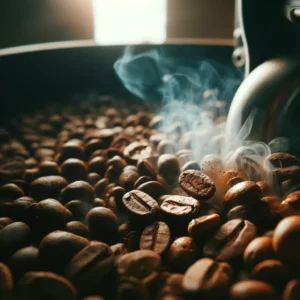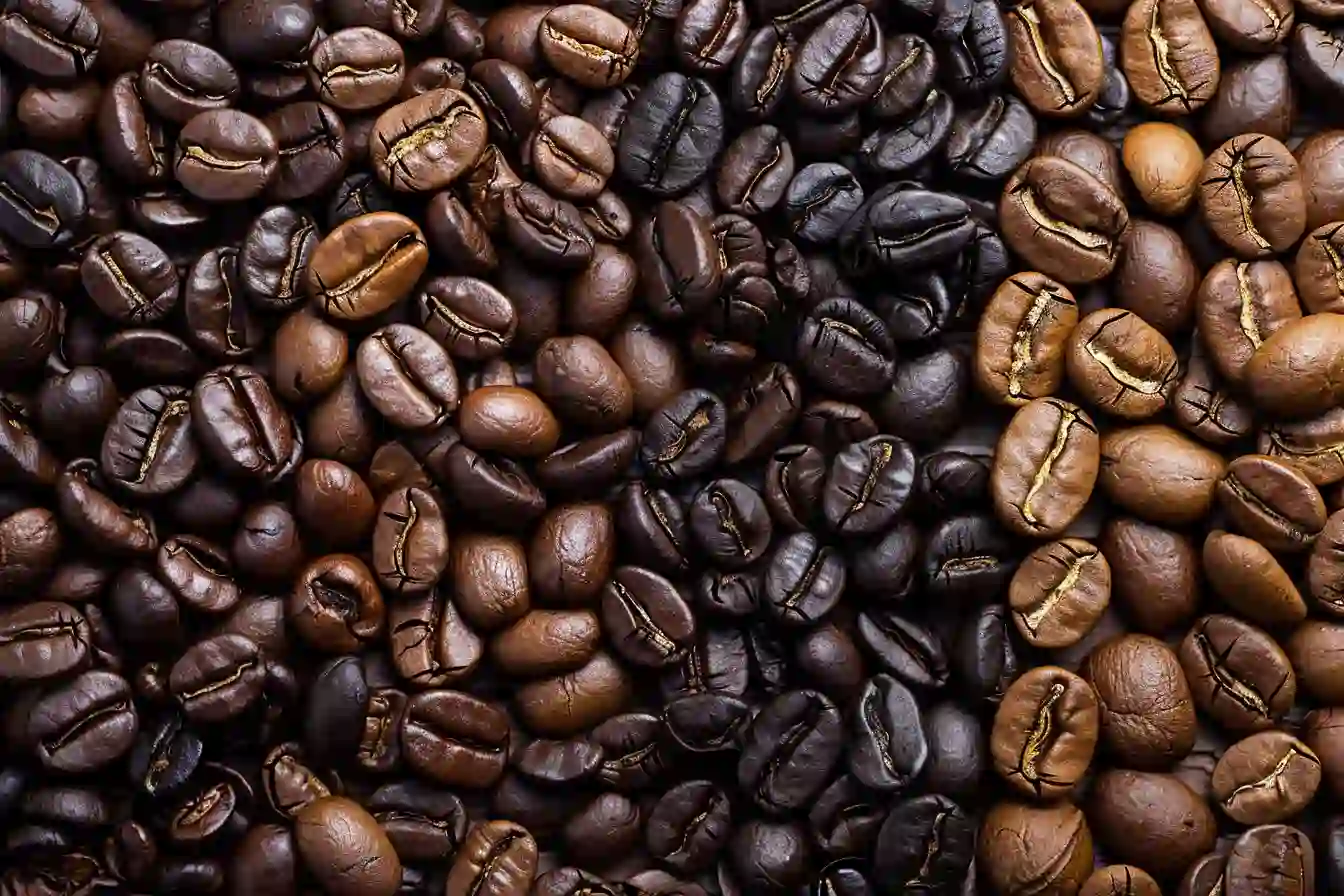The Art of Roasting Coffee
Welcome to the fascinating world of coffee roasting! If you’ve ever wondered how those humble green beans transform into the aromatic, flavorful coffee you love, you’re in the right place. In this post, we’ll dive deep into the different coffee roasting methods and explore how each technique impacts the coffee’s profile and taste. Whether you’re a home enthusiast or a budding roaster, understanding these processes will elevate your appreciation and enjoyment of every cup.
Importance of Coffee Roasting
Roasting coffee is more than just applying heat to beans. It’s about unlocking the magic hidden within each bean. The primary goal of roasting is to reveal the maximum aromatic and flavor characteristics of the bean while balancing the roast flavor and the bean’s natural attributes. Essentially, it’s the difference between a flat cup of joe and a mind-blowing sensory experience.
Steps in Coffee Roasting
Roasting coffee involves several key stages, each crucial for developing the beans’ unique flavors and aromas. Let’s take a detailed look at each step:
1. Preheating
Think of preheating like a warm-up before a workout. Gradually heating green coffee beans helps reduce their moisture content and prepares them for roasting. This step ensures even roasting and prevents beans from cracking prematurely. It’s a gentle start that sets the stage for a smooth roasting process.
2. Drying Stage
In this initial phase, beans are dried at temperatures below 160°C for about 4-8 minutes. The primary goal here is to reduce the beans’ internal moisture content. As the beans dry, they gradually change from green to yellow and start to emit a grassy aroma. Imagine your beans going through a spa treatment, shedding excess moisture to get ready for the real action.
3. Maillard Reaction
During this stage, the beans reach temperatures between 140°C and 160°C. Chemical reactions between sugars and amino acids begin, creating unique flavors and aromas. The beans start to brown, and the first hints of coffee’s complex flavor profile emerge. This is where the magic starts to happen, laying the foundation for the final taste.

First crack: A crucial moment in coffee roasting.
4. First Crack
When the beans reach approximately 196°C, they undergo the first crack. This is an audible crack, similar to the sound of popcorn popping. The beans expand and release steam as internal pressure builds up. The first crack is a critical point in the roasting process, signaling the transition from the initial roasting phases to the development of the final flavors and aromas. It’s like the beans are saying, “Here comes the flavor!” This stage typically lasts a few minutes, and roasters must pay close attention to ensure the desired roast level is achieved without over-roasting.
5. Development Stage
After the first crack, the beans enter the development stage, where their final flavor and aroma profile is formed. This stage lasts 1-3 minutes, during which roasters carefully control the heat to balance acidity, sweetness, and bitterness. It’s a delicate balancing act, fine-tuning the flavors to perfection and ensuring that the beans reach their peak potential.
6. Second Crack
For darker roasts, the beans may undergo a second crack at higher temperatures, around 224°C. This second crack is less intense than the first but still audible. It leads to the development of deeper flavors like caramel and chocolate. The beans take on a darker color and a more intense aroma. Think of it as adding the final touch to a masterpiece, enhancing the richness and complexity of the coffee.
7. Cooling
Rapid cooling of the beans is essential to stop the roasting process and preserve the developed flavors and aromas. This step prevents over-roasting and ensures that the coffee retains its desired characteristics. It’s like hitting the brakes just in time to avoid a flavor disaster. Cooling can be done using air or water, and it’s crucial for locking in the flavors that have been meticulously developed throughout the roasting process.
Types of Coffee Roasts

From light to dark: The spectrum of coffee roasts
The roast level profoundly affects the coffee’s flavor, aroma, and body. Understanding these different levels can help you choose the perfect roast for your taste preferences. Let’s break down how each roast level influences your cup:
1. Light Roast
Light roasts are roasted for a shorter time, resulting in a light brown color. These roasts retain most of the bean’s original flavors and characteristics, making them a favorite among coffee purists and those who want to experience the true essence of the bean. Light roasts are characterized by:
- High Acidity: Bright and tangy, often with a pronounced citrus or berry-like sharpness.
- Bright Flavors: Fruity and floral notes are common, offering a vibrant and lively taste profile.
- Lighter Body: A more delicate mouthfeel that allows the unique qualities of the coffee origin to shine through.
Light roasts are ideal for single-origin and specialty coffees where the unique characteristics of the bean can be fully appreciated.
2. Medium Roast
Medium roasts offer a balanced profile, striking a harmonious blend of the bean’s inherent flavors and the roasting process’s influences. These roasts are typically a rich brown color without the oily surface seen in darker roasts. Medium roasts are known for:
- Balanced Acidity: A milder acidity that complements the other flavors without overpowering them.
- Complex Flavors: Caramel, chocolate, and nutty notes that provide a well-rounded and satisfying taste.
- Fuller Body: A more robust and satisfying mouthfeel that makes it versatile for different brewing methods.
This roast level is perfect for those who enjoy a middle ground between the bright, acidic notes of a light roast and the deep, rich flavors of a dark roast. It’s ideal for various coffee types, including espresso and filter coffee.
3. Dark Roast
Dark roasts are roasted the longest, resulting in a dark brown color with an oily surface. The extended roasting process brings out bold, intense flavors while subduing the bean’s original characteristics. Dark roasts are distinguished by:
- Lower Acidity: The acidity is significantly reduced, creating a smoother and less sharp taste.
- Robust Flavors: Rich, smoky, and sometimes bittersweet notes, often with hints of caramel, chocolate, and toasted nuts.
- Heavier Body: A thick, full-bodied mouthfeel that stands up well to milk and sugar, making it ideal for strong coffees and espresso.
Dark roasts are perfect for those who prefer a bolder, more intense coffee experience. They are particularly popular for espresso drinks and those who like their coffee with a kick.
Roasting Methods and Their Impact on Flavor
Different roasting methods can significantly influence the coffee’s flavor and aroma. Let’s explore the most common techniques and their effects on your cup:
1. Drum Roasting
Overview: In drum roasting, beans are tumbled in a rotating drum heated by gas or electric burners. This method provides even heat distribution and is favored by many commercial roasters.
Flavor Profile: Drum roasting often produces a rich, full-bodied coffee with deep, complex flavors. The beans have a balanced acidity and sweetness, making this method ideal for medium to dark roasts.
2. Hot Air (Fluid Bed) Roasting
Overview: This method uses a stream of hot air to roast the beans, keeping them suspended and constantly moving. It’s a faster roasting process and allows precise temperature control.
Flavor Profile: Hot air coffee roasting tends to produce a cleaner, brighter coffee with more pronounced acidity. It’s perfect for lighter roasts that highlight the bean’s origin characteristics and delicate flavors.
3. Direct Fire Roasting
Overview: Direct fire roasting involves exposing beans directly to a flame, which can quickly roast them but requires skill to avoid scorching.
Flavor Profile: This method can create bold, intense flavors with a hint of smokiness. It often results in a darker roast with a heavier body and lower acidity.
4. Infrared Coffee Roasting
Overview: Infrared roasters use infrared radiation to heat the beans. This method provides precise control over the roasting process and can reduce the roasting time.
Flavor Profile: Infrared roasting typically produces a smooth, consistent flavor with balanced acidity and sweetness. It’s versatile and can be used for various roast levels.
Important Considerations in Coffee Roasting
Several factors play a crucial role in the coffee roasting process:
Choosing Green Beans
The quality and freshness of green beans greatly affect the final roast. At Ostova Coffee, we source the finest Indonesian beans, ensuring each roast brings out the best in flavor and aroma.
Temperature and Time Control
Precise control over temperature and time ensures desirable flavor and aroma. Roasters at Ostova Coffee meticulously adjust these variables to craft the perfect roast for each bean variety.
Experimentation and Testing
Roasting is an art that requires frequent testing to achieve the desired flavor profile. At Ostova Coffee, we are committed to experimenting and refining our roasting techniques to consistently deliver exceptional coffee.
Commitment to Quality at Ostova Coffee
Our aim at Ostova Coffee is to reveal the best aromatic and flavor attributes of coffee beans. We expertly roast our beans with attention to detail, balancing the roast with the inherent characteristics of the beans. Our process reflects the natural environment of the coffee’s origin, showcasing the variety, microclimates, processing methods, and soil conditions.
Innovative Coffee Roasting Methods
At Ostova Coffee, we embrace innovative roasting methods to enhance the unique flavors of our beans:
Profile Roasting
Adjusting temperature and time based on the desired flavor profile, we ensure each roast highlights the beans’ best characteristics.
Oxygen-Controlled Roasting
Manipulating oxygen levels during roasting can enhance unique flavors. This advanced technique helps us create distinctive flavor profiles in our coffee.
Chemical Analysis Roasting
Using analytical tools to monitor chemical compounds allows us to achieve high-quality, complex flavors. This scientific approach ensures that every batch of Ostova Coffee meets our high standards.
Understanding the different roasting methods and their impact on flavor can deepen your appreciation for the coffee you drink. Whether you prefer the bright, fruity notes of a light roast or the rich, bold flavors of a dark roast, there’s a world of discovery in every cup. At Ostova Coffee, we are passionate about roasting and are dedicated to bringing you the finest Indonesian coffee. So, the next time you sip your coffee, take a moment to savor the journey from bean to brew.
Happy brewing!
